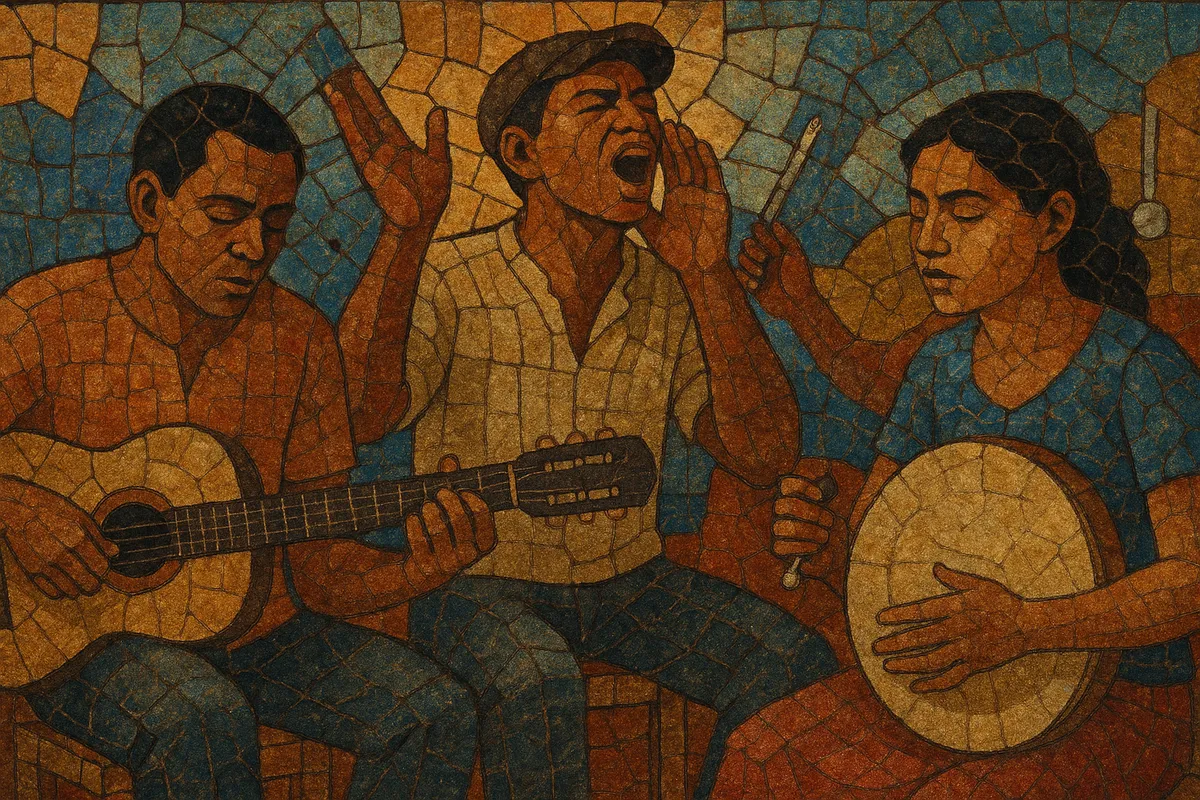Santé engagé (Mauritian Creole for "engaged/committed song") is a protest-oriented song tradition from Mauritius that fuses the island’s sega rhythmic language with guitar-led folk and French-influenced chanson.
It places the message at the center: lyrics in Kreol Morisien address labor struggles on sugar estates, post‑colonial identity, social justice, and everyday life. The sound is typically acoustic and communal—ravanne (frame drum), maravanne (seed rattle), triangle, and strummed guitars underpin clear, singable melodies designed for rallies, meetings, and informal gatherings.
While rooted in sega’s dance pulse, santé engagé is as much a listening and thinking music as a dancing one, combining the intimacy of folk with the rhetorical potency of protest song.
In the years following Mauritian independence (1968), a new current of politically conscious song coalesced around trade-union activity, youth circles, and neighborhood cultural groups. Artists began to frame sega’s danceable grooves as vehicles for commentary, using Kreol Morisien rather than French or English to speak directly to workers and the urban poor. The phrase "santé engagé" (literally, "engaged song") emerged to describe this practice.
Early collectives like Soley Ruz and voices such as Bam Cuttayen helped codify a style that drew on the guitar-and-voice intimacy of folk and the text-forward ethos of French chanson, while retaining the percussion feel of sega tipik (ravanne, maravanne, triangle).
Through the rise of social movements and the MMM era, concerts, rallies, and street gatherings provided the natural habitat of santé engagé. Groups such as Grup Latanier refined a plainspoken, slogan-ready lyrical craft—choruses were built for call-and-response, and songs often circulated on cassettes, community radio, and at cultural evenings. The repertoire broadened to include songs about language rights, housing, inequality, and dignity, affirming Kreol as a modern literary and musical medium.
Santé engagé shared space with other Indian Ocean traditions of committed song (e.g., Réunion’s maloya engagé) and interacted with reggae currents on the island. This milieu set the social and linguistic groundwork for later fusions—most famously seggae—which kept protest themes alive while shifting the rhythmic center.
While popular styles diversified, santé engagé remains a reference point for Mauritian artists who prioritize message and community presence. Contemporary ensembles and youth cultural groups continue to perform and teach the songs, keeping their civic function—education, critique, and solidarity—active in festivals, schools, and grassroots events.


